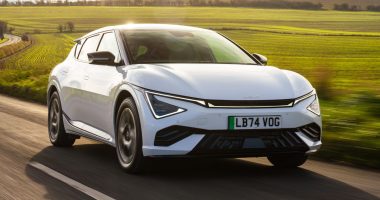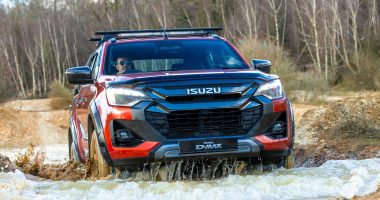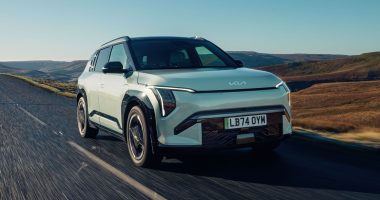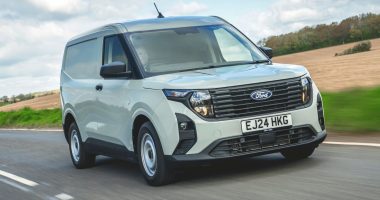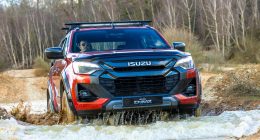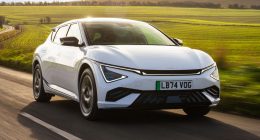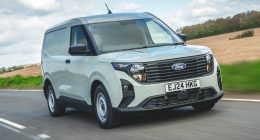New year, new start. That is very clearly the message coming from Kia towers as far as the Ceed range is concerned. For 2022, all models in the line-up – including this week’s test car, the Sportwagon estate – have been given “a comprehensive up-date” to also include the company’s snazzy corporate logo.
Table of Contents
TALK ME THROUGH THE CHANGES
Designers have lavished a lot of their attention on the frontal elements of the Ceed Sportwagon, which remains unchanged dimensionally at 4.6m long and 1.8m wide. Sold in ‘2’, ‘2 Nav’ and ‘3’ trims, each model is slightly different to mark them out from one another, so entry-level models wear snowflake-lookalike 16-inch alloys whereas range-topping models sit on sportier 17-inch wheels. Common to all three is the reprofiled ‘tiger nose’ grille, ‘air curtains’ on either side of the front bumper, smoothed out tail-lights and faux black diffuser trim piece for the rear bumper. Two other changes include a new colour called ‘Machined Bronze’ and the Kia badge is no longer framed in a black oval on the nose or tail of the Sportwagon – or any other new car built by the Korean manufacturer, for that matter. Instead, this is spelt out in funky, italicised silver lettering. It definitely gets the thumbs up from us.
HAS THE INTERIOR CHANGED MUCH?
Inevitably, mid-cycle refreshes only allow engineers to change so much with a car until its replacement enters the arena. Truth be told, though, there was never much wrong with the Ceed’s interior in the first place and Kia has chosen not to tamper with a universally liked formula. The squidgy dash has a strait-laced manner about it, so there is no chance of you being left feeling overwhelmed unlike some rivals who prioritise form over function. In ‘2’ cars the ‘floating’ multimedia screen is 8-inches in size and mixes manual inputs for smartphone connections with shortcut menu keys. Beneath this sits a clearly labelled pane with buttons for the heating and ventilation. It isn’t the most dazzling arrangement but some manufacturers could do a lot worse than adopt this refreshing simplicity. Perceived quality is upped by flashes of piano black plastic and chrome accents; they look the part and are present in just the right amount.
ROOM FOR FOUR AND THEIR STUFF
It goes without saying the Sportwagon, with its upright shape and boxy profile, is a roomy and spacious form of car ownership for a family and their four-legged friend. That is especially if you’re still reluctant to join the masses and go down the crossover or Sport Utility Vehicle route. But if you would be willing to sacrifice practicality for sleeker styling and a coupe-inspired rear then take a look at the ProCeed. It loses out in terms of headroom due to the sloping roofline, whereas its Sportwagon brother has no such concerns. The former is also trumped, although not by much it should be said, when it comes to total boot space: with the rear seats in the upright position, it loses out by only 31-litres. Surprisingly, diesel models of the Sportwagon are less practical (512-litres) due to the need for these models to run a selective catalytic converter. The trade-off is fewer stops between journeys to the fuel pumps.
WHAT’S UNDER THE BONNET?
The 1-litre ‘T-GDi’ is a small displacement petrol and is reserved exclusively for ‘2’ trim. A combination of three-cylinders and a turbo should ensure the smallest engine in the line-up is brimming with low-down torque and strong initial pick-up – but it doesn’t. If anything, the motor has a laggy and unresponsive character. Unladen, performance is sure to be adequate for most owners but add passengers into the mix and it quickly loses what little shine it had as you have no option but to rev the motor out to build up a head of steam. By no means is it noisy or uncivilised but paired to a light and easy-to-shift 6-speed manual it can, on occasions, be tiresome work. Costlier ‘2 Nav’ and ‘3’ versions of the Ceed Sportwagon share the same 1.6-litre turbo diesel and 1.5-litre forced induction petrol that develop 134bhp and 158bhp respectively. But whereas the ‘2 Nav’ gets a manual box, power is sent to the front axle on ‘3’ versions via a 7-speed dual-clutch automatic transmission.
HOW DOES IT DRIVE?
It is an enjoyable car to steer, if not quite as fun as the benchmark in this class – the Ford Focus. Body control is good and the extra length introduced by the stretched body doesn’t upset the dynamic applecart too much. The smaller wheels suit the comfort-orientated bias of the Ceed Sportwagon well; all the usual anomalies found on main roads and rural lanes generally don’t pose much of a problem for the fully independent suspension. Low-speed damping is equally as effective, although noise is an issue from inside the cabin – something that should be addressed when the next generation Ceed lands. An accurate steering set-up that is nice on heft would flourish were it blessed with greater feedback.
PROS AND CONS
+ Solid and nicely made interior
+ Decent-sized and versatile boot
+ Industry-leading warranty
– Not outstanding in one area
– Small petrol lacks real punch
– Styling changes hard to spot
CARGO AREA: The underlying reason why people opt for an estate – sorry, Sportwagon – is the extra body length and larger boot. This is certainly true in petrol versions of the Ceed Sportwagon as the boot weighs in at 625-litres with the 60/40 back seats in use and 1,694-litres when these are folded down. By comparison, diesel-powered cars have a 512-litre boot in 5 seat mode rising to 1,581-litres.
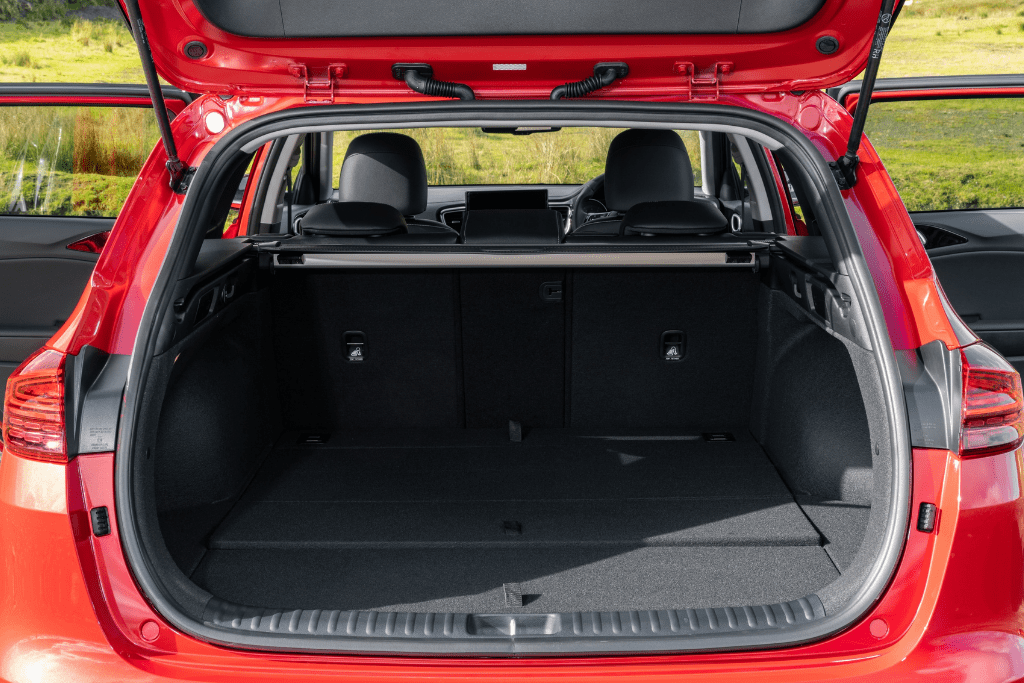
STYLING: Finished in gloss black, Kia’s ‘tiger nose’ grille has been reworked as part of the subtle facelift process. The profile of the front bumper, and the lower half of the rear bumper which incorporates a faux diffuser trim piece, are both new. Alloys and slender driving lights are standard across the range, with the colour palette broadened by the addition of a new metallic hue named ‘Machined Bronze’.
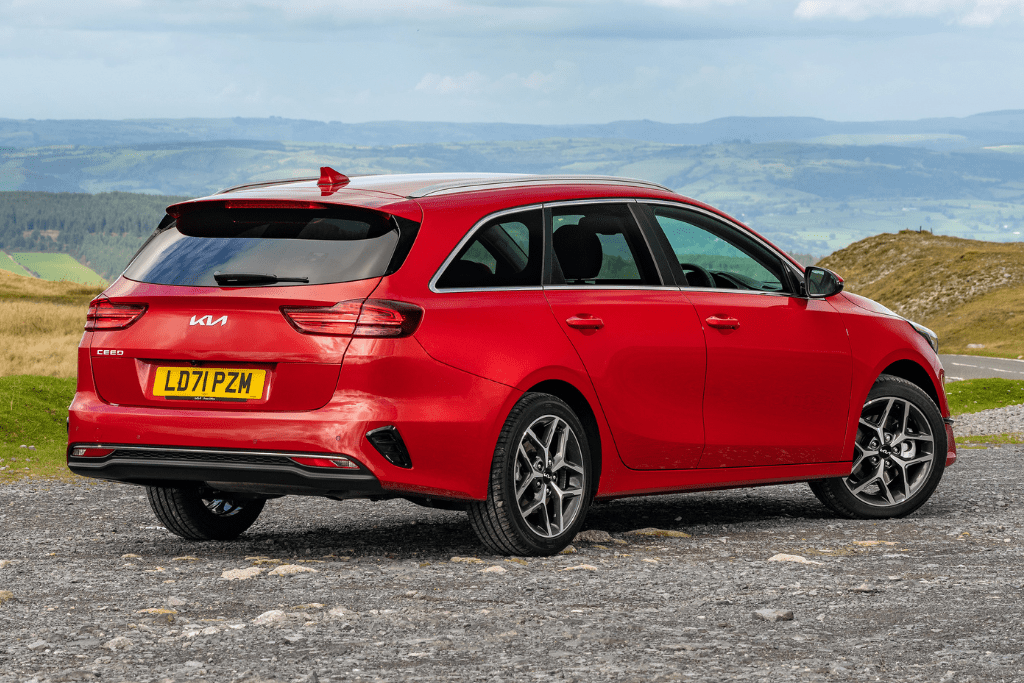
INTERIOR: There are few changes on the inside of the facelifted Sportwagon compared to the outgoing car, with ‘2’ cars getting an 8-inch touchscreen and ‘2 Nav’ and ‘3’ a larger 10.25-inch unit. Standard kit on entry-level Sportwagons is still comprehensive and includes a 4.2-inch digital driver cluster, an active reversing camera, high-beam assist, cruise control with speed limit function and lane keep assist.

PRACTICALITY: There is enough head room for taller adults in the rear of the car but leg room is more generous in the Skoda Octavia Estate. Middle-seat passengers benefit from a near-flat floor and access to the back is good as the doors on the Sportwagon open nice and wide. Only top ‘3’ trim has more versatile 40/20/40 split-folding seats but all models have a rear armrest. General cabin storage is good.

SPECIFICATION
Price: £21,635 (as tested)
Engine: 1-litre, 4cyl turbo petrol
Power/torque: 118bhp/127lb ft
Transmission: 6-speed manual, front-wheel drive
0-62mph: 11.4 seconds
Top speed: 118mph
Economy/CO2: 53.3mpg/121g/Km


